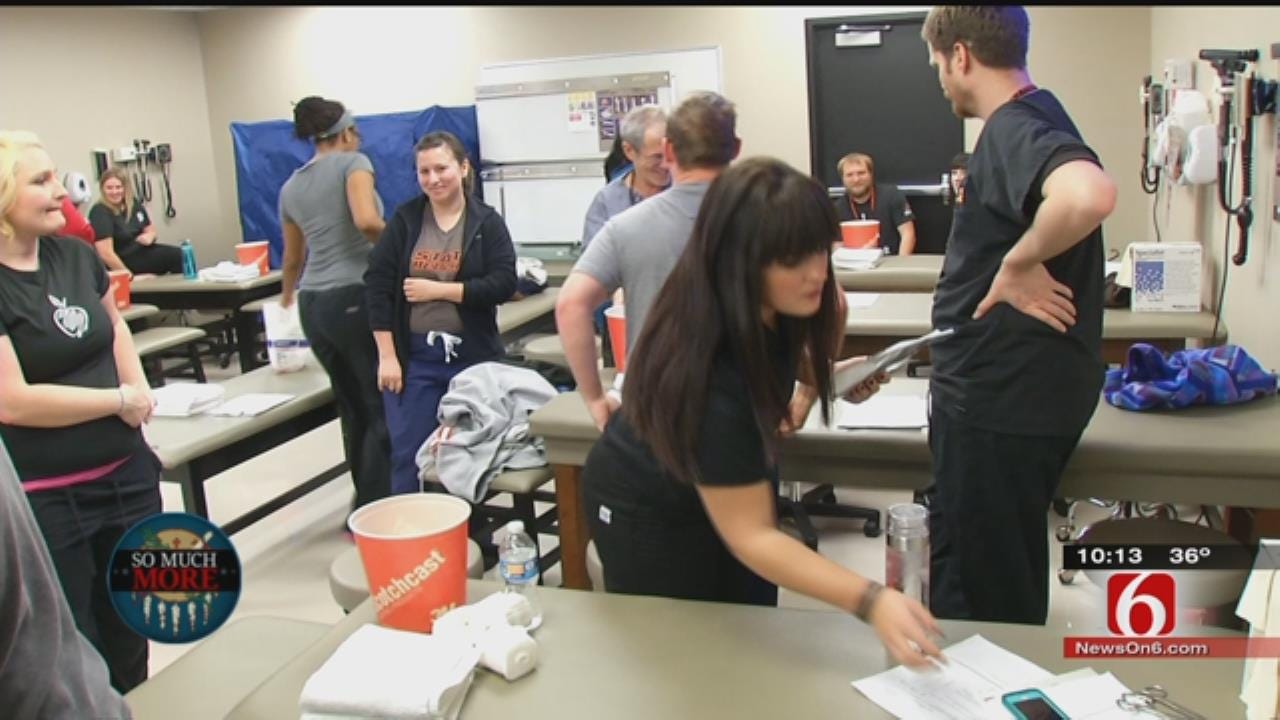OSU Professor's Push To Bring More Native Americans Into Medical Field
<p>In a state as desperate for doctors as Oklahoma, where do we find the next generation of healers? Some say the best solution is to grow our own.</p>Wednesday, December 16th 2015, 11:38 pm
In a state as desperate for doctors as Oklahoma, where do we find the next generation of healers?
Some say the best solution is to grow our own, and that’s the goal at OSU's Center for Health Sciences in Tulsa, where there's a new push to show Native American students they have what it takes to succeed in the sciences.
Medical school is a long and trying grind.
For every life transformed by your work, some days are just filled with learning to set a broken foot.
Linsea Howard and Rafe Coker both beat the odds by being there.
They are Native American by heritage - Linsea, a Cherokee from Tahlequah, and Rafe, a Choctaw from Tuttle, a little town out in Grady County where growing up he learned first-hand what it means to be a family doctor.
“I did, there's one doctor there, family doc, and I just remember my sister and I both having to drive to Oklahoma City, 45 minutes away, or Chickasaw, another 45 minutes the other way, to get any care other than the part-time family physician there, so I definitely saw the physician shortage first-hand,” he said.
Dr. Kent Smith said, “I call it Native for Native, leading as a native mentor, as a scientist, a research scientist, as medical students like Rafe and Linsea, they're Native American and they're in medical school, how did they get here?”
As director of the new Office for the Advancement of American Indians in Medicine and Science at the OSU Health Sciences Center in Tulsa, Smith’s goal is to recruit more Native high school and college students into medicine and science careers.
“It gives these students an opportunity to see someone like themselves that have been able to succeed and enter a field they've never thought of before,” he said.
Nationwide, 51 percent of Native American students graduate from high school - it's 63 percent in Oklahoma.
Of those who continue on to college, only 2.5 percent of them pursue a STEM career. And when they get to college, they'll find less than a quarter-of-one percent of the administrators, faculty and graduate students are Native.
So Smith, a professor of anatomy and cell biology and a member of the Comanche and Chickasaw tribes, works to turn those numbers around.
He leads summer field work expeditions across the west, in which Native students incorporate archeology, paleontology, biology, zoology and biomechanics hand-in-hand with research scientists from OSU and other universities across the nation.
They're called Native Explorers, and students like Rafe and Linsea are his shining examples. They travel the state speaking to tribal students, sixth through 12th graders, holding mini-medical camps, reminding the kids of what's possible, and how desperately they're needed.
“It'll be great to get more Native American kids involved in medicine and getting to learn how to treat these diseases and then go back to their communities and treat these,” Howard said.
Coker said, “I've absolutely loved medical school and I definitely know this is where I'm supposed to be.”
And though it may not look like it, there's lots more room to make Oklahoma, "So Much More."
“And that's ultimately what I see this program and this new office doing is improving the health and wellness of all of Oklahoma, but targeting the rural areas who at this time need it the most,” Smith said.
You can learn more about the Advancement of American Indians in Medicine and Science here.
More Like This
December 16th, 2015
April 15th, 2024
April 12th, 2024
March 14th, 2024
Top Headlines
April 19th, 2024













